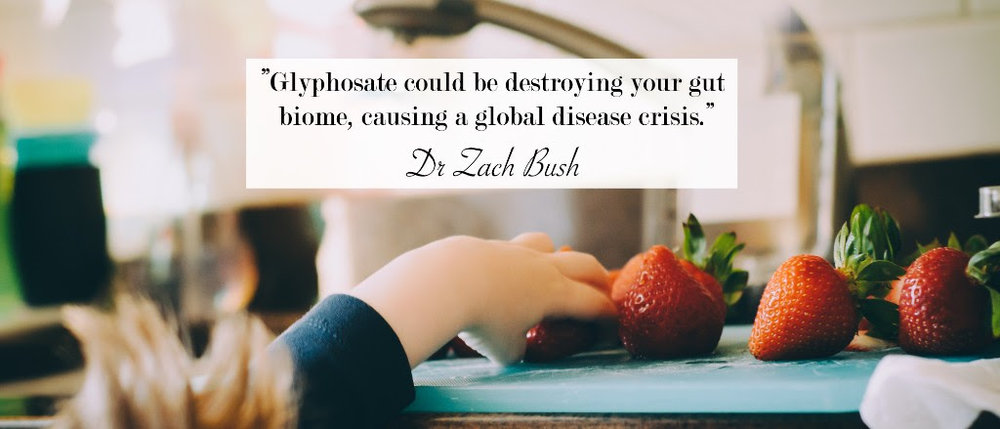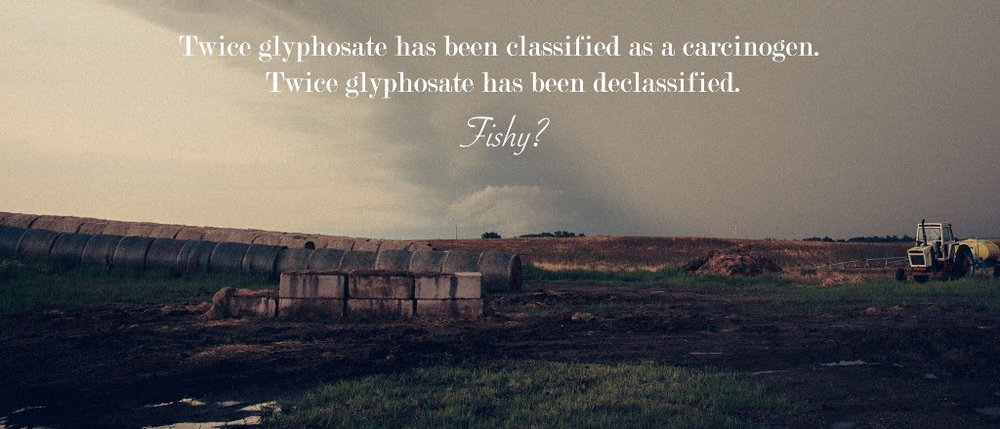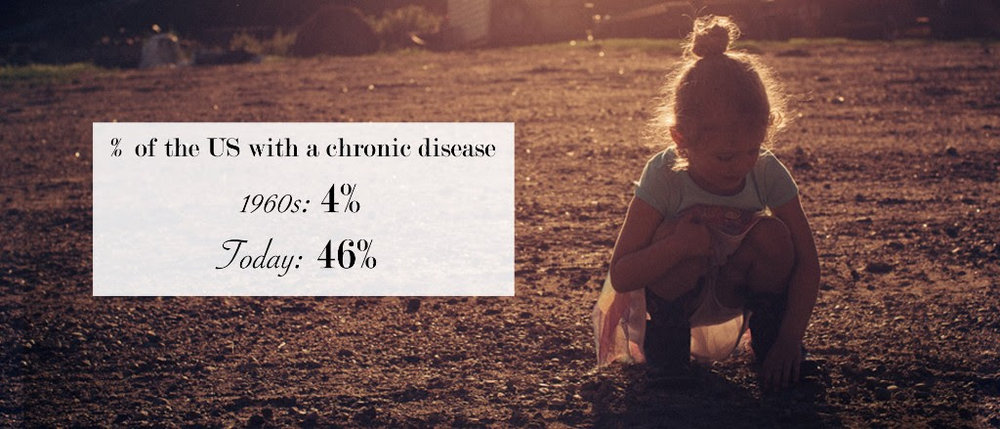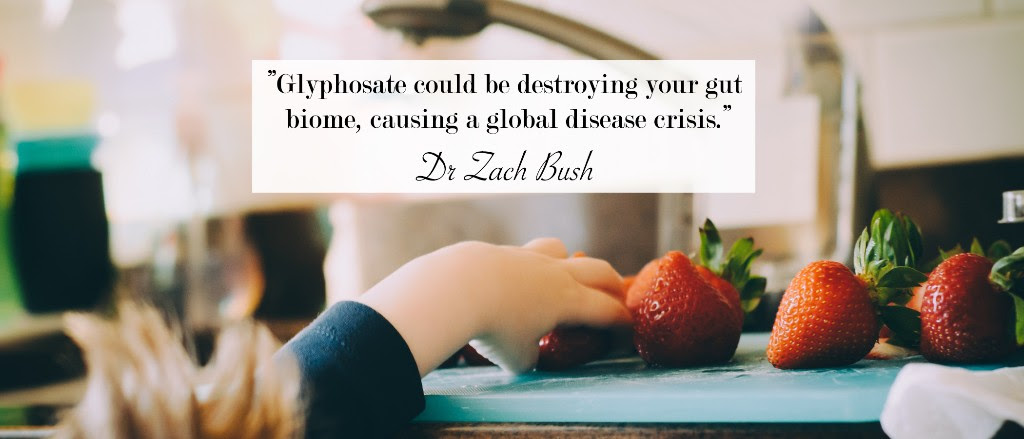June 17, 2019
By The Farmer’s Footprint

Photo Credit: Farmer’s Footprint
A CHEMICAL YOU SHOULD BE AWARE OF
Over the last 20 years we have seen a dramatic change in the demographics of chronic disease in the U.S. Independent research from private and university laboratories around the world have begun to implicate glyphosate as a primary culprit. Glyphosate is the active ingredient in the ubiquitous herbicide ‘Roundup’ that has infiltrated the majority of our food, water, air, and rainfall. It functions by blocking the production of proteins needed for growth in plants. In humans, it blocks amino acids including tryptophan, which is essential for hormone production. This causes a huge amount of problems for the human body and the environment.
In 1985 glyphosate was classified by the EPA as a carcinogen, only to be repealed in 1991. In 2015 the WHO’s cancer research agency (International Agency for Research on Cancer) stated that glyphosate was “probably carcinogenic to humans”, but the EPA maintains that it is safe.

Photo Credit: Farmer’s Footprint
HOW IS THIS AFFECTING ALL OF US?
Glyphosate is water soluble. That means is can infiltrate our drinking water, rainfall, the air we breathe, and our food supply. During production of ‘Farmer’s Footprint’, we spent time in rural Minnesota learning the details of the watershed and run off into the Mississippi Delta reiterating our concerns and just how widespread this chemical has become.
The EPA, FDA and the USDA do not regularly test for glyphosate. In fact, they never have because it has always been considered non-toxic. However, independent tests and leaked FDA emails have shown high traces of the herbicide in household staples such as crackers, oatmeal and even baby food (Source: Modern Farmer).
One of the major concerns about glyphosate is that it is patented as an antibiotic. This makes sense as it is a non-selective herbicide, meaning it will kill most plants. That’s why the same company who makes glyphosate pesticides makes genetically modified glyphosate resistant plant seeds.
Antibiotics kill bacteria in your body, both the good and the bad. The place we have the most good bacteria in our body is in our gut. Our gut biome is regulated by good bacteria and cannot function properly without it. Since glyphosate is so widely used on edible crops and is being found in food, this means that we are regularly killing the good bacteria in our gut biome. The addition of a single chemical into our food system has disrupted the fabric of biologic life. Essentially, it eliminates the natural medicine in our foods. This means that not only are we getting sick more often, our bodies are less able to fight off disease.
While this has negative effects like decreased ability of the body to filter toxins, it has also been hypothesized that it could be causing an increase in global diseases, especially “ADHD (attention deficit hyperactivity disorder), autism, Alzheimer’s disease, infertility, birth defects, and cancer” (Source: Samsel and Seneff, 2013). Learn more from Dr Zach Bush in an interview here.

Photo Credit: Farmer’s Footprint
WHAT ARE THE AFFECTS ON THE ENVIRONMENT?
The antibiotic (literally anti-life) effect of glyphosate is a huge problem for humankind but also for the environment. Thriving microbes are key to healthy soil that can regenerate and be reused after one crop is finished. Bacteria balance is important to fight off root parasites and while glyphosate reduces runoff by binding to key soil minerals, research shows that that same effect restricts plant’s access to those minerals. (Source: New York Times)
It gets a bit darker, if you can imagine that. Who would want to own the main company whose primary product removes the medicinal qualities from food? A company that makes medicine. So it’s no wonder that Bayer, a company that first patented heroine in the early 1900s, bought Monsanto, the world’s largest seed company and owner of the world’s most used herbicide, key ingredient of which is glyphosate. Bayer is tightening control over the food supply through this purchase (Source: Mother Jones) and what they have planned looks grim.

Photo Credit: Farmer’s Footprint
What can be done?
The new movement of agriculture IS on the rise. Regenerative agriculture is an alternative method of farming that focuses on rebuilding soil by adding compost material which increases biodiversity, resulting in healthy crops that are resilient and support our atmosphere with carbon sequestering. Our documentary will highlight some of the brave farmers that are turning the agriculture industry around by practicing this new (and simultaneously ancient) science. Our next newsletter will highlight all the amazing strides that have been made in this area.
Until next time – try to buy organic, find your local farmers, share the educational materials and join the growing movement of regenerative agriculture.
Be well. Be you.
The Farmer’s Footprint Team
Connect with the Farmer’s Footprint team. Sign up for their newsletter here, like them on Facebook and follow them on Instagram.
If you enjoyed this blog, sign-up for the Richer Health newsletter to receive future updates.

Comments